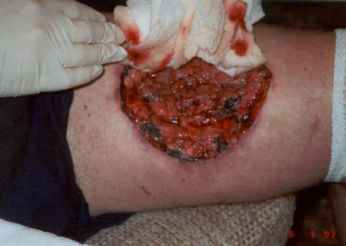After watching the SpiderMan movie as a kid, I really wanted to be bitten by a spider!
Having the super powers of SpiderMan must be amazing!
Climbing on walls, jumping of buildings, shooting web!
SpiderMan is Awesome!
But in real life things are a little bit different!
There are so many spider species, but there is a nice one in the south of America.
The brown recluse spider or violin spider.
Brown recluse spiders are usually between 6–20 mm, but may grow larger.
While typically light to medium brown, they range in color from cream-colored to dark brown or blackish gray.
These spiders usually have markings on the dorsal side of their cephalothorax, with a black line coming from it that looks like a violin with the neck of the violin pointing to the rear of the spider, resulting in the nicknames fiddleback spider, brown fiddler, or violin spider.
In 2001, more than 2,000 brown recluse spiders were removed from a heavily infested home in Kansas, yet the four residents who had lived there for years were never harmed by the spiders, despite many encounters with them.
The spider usually bites only when pressed against the skin, such as when tangled within clothes, towels, bedding, inside work gloves, etc.
Many human victims report having been bitten after putting on clothes that had not been worn recently, or had been left for many days undisturbed on the floor.
Deadly bites?
The bite frequently is not felt initially and may not be immediately painful, but it can be serious.
The brown recluse bears a potentially deadly hemotoxic venom.
Most bites are minor with no necrosis.
In very rare cases, bites can even cause hemolysis—the bursting of red blood cells.
Most brown recluse bites do not result in necrosis or systemic effects.
When both types of loxoscelism do result, systemic effects may occur before necrosis, as the venom spreads throughout the body in minutes.
 Children, the elderly, and the debilitatingly ill may be more susceptible to systemic loxoscelism.
Children, the elderly, and the debilitatingly ill may be more susceptible to systemic loxoscelism.The systemic symptoms most commonly experienced include nausea, vomiting, fever, rashes, and muscle and joint pain.
Rarely, such bites can result in hemolysis, thrombocytopenia, disseminated intravascular coagulation, organ damage, and even death.
Most fatalities are in children under the age of seven or those with a weak immune system.
What is the truth?
While the majority of brown recluse spider bites do not result in any symptoms, cutaneous symptoms occur more frequently than systemic symptoms.
In such instances, the bite forms a necrotizing ulcer that destroys soft tissue and may take months to heal, leaving deep scars.
These bites usually become painful and itchy within 2 to 8 hours.
Pain and other local effects worsen 12 to 36 hours after the bite, and the necrosis develops over the next few days.
Over time, the wound may grow to as large as 25 cm.
The damaged tissue becomes gangrenous and eventually sloughs away.
Here we can see the progressive deterioration of a necrotic wound caused by the venomous bite of a brown recluse spider!
I love the nature!
But don`t panic to much.
Unlike the example in the preceding photos, the majority of brown recluse bites are "uneventful," doctors say, and rarely progress to such a serious stage.
Getting a spider bite? No thank you.






2 comments:
the wounds....are they real, they look so disturbing...
Yes it is real
Post a Comment